For me, there’s no better way to intimately reconnect with nature than by camping in the backcountry. It’s the perfect way to experience the wilderness in of all its wondrous glory – just you and the elements.
Backcountry camping requires a little more planning, preparation and essentials compared to traditional car camping. The amount of equipment you can bring is mostly limited by your carrying capacity.
There is a trade-off between weight, size, comfort and cost. Hence, packing light-weight, durable and functional camping equipment is critical.
So, if you’re planning a trip, or just need a friendly reminder, these are 15 backcountry camping essentials you’ll need to have a great trip!
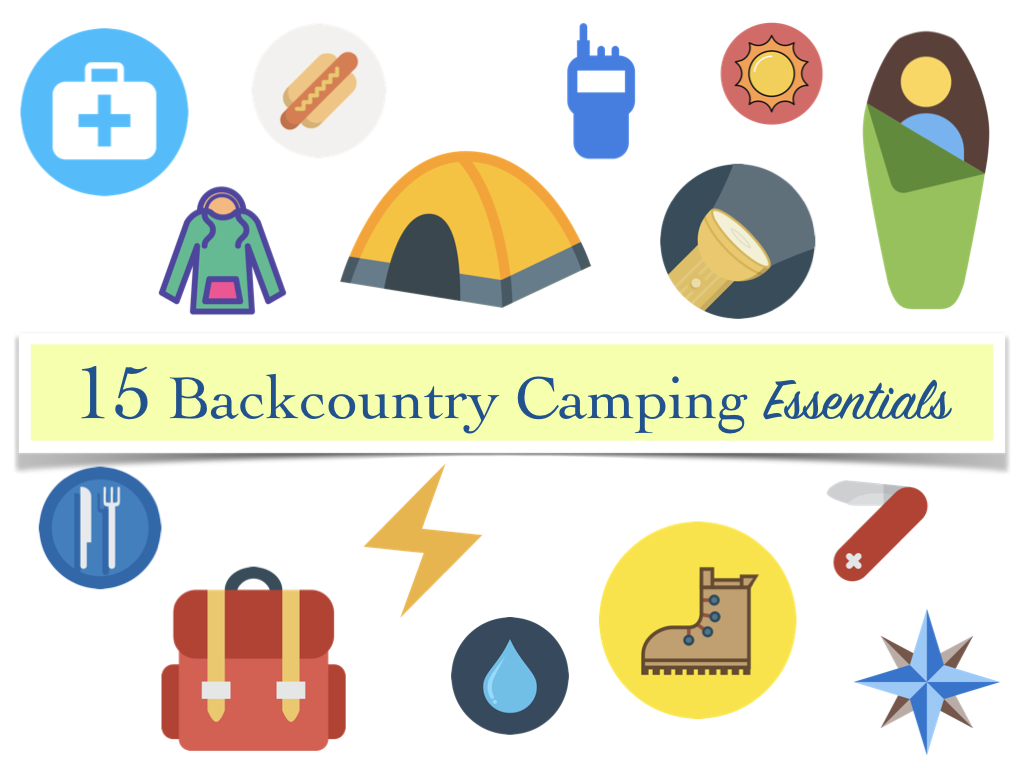

1. Tent
Of all the backcountry camping essentials, a tent is one of the most important.
A robust tent can weather the elements, is both functional and comforting, and is easy to pitch and take down in any condition.
For backcountry camping, I use a Marmot 2-person tent. The light-weight and waterproof construction coupled with its super simple set up (thanks to its “hub” pole design) makes it ideal for the backcountry.
I’ve pitched this tent solo in under 4 minutes in rainy and windy conditions. It’s kept me, my equipment and my dog bone dry during an overnight torrential downpour!
Pro-tip: Consider tents with plenty of storage options for your gear – inner pockets for headlamps and water bottles and vestibules for packs and shoe storage are very useful.

2. Backpack
Carrying all of your gear into and out of the backcountry can be very physically demanding. Therefore, having a properly sized and comfortable backpack is very important.
A good pack allows you to access your equipment quickly, with an ergonomic design that keeps the weight close to your body causing the least amount of strain.
My wife and I carry our gear in our Osprey 68L and Outbound 75L packs. They’re light-weight and durable, can easily fit all of our backcountry camping essentials. They are very comfortable to carry for extended periods and they’ve served us well for all our camping and traveling needs.
When selecting a backpack, I definitely recommend going in-store and testing out a few packs before making your purchase. That way you’ll find something that fits your body perfectly! And, it can carry all your backcountry camping essentials efficiently.
Pro-tip: If you have a non-waterproof backpack, consider a waterproof cover or liner to keep your stuff dry in a deluge.

3. Sleeping System
A great sleeping bag and pad will keep you warm and comfortable on those cooler nights on less than soft ground. The key is to select a sleeping system that covers the range of temperatures you would be expecting whilst outdoors.
Sleeping bags come in a variety of ratings which reflect the season(s) they are designed for. Since I mostly camp during late spring, summer and early fall, my sleeping bag is rated to +5°C.
To keep my pack light, I take an individual therma-rest sleeping pad or foam sleeping pad that helps keep me insulated and off the ground.
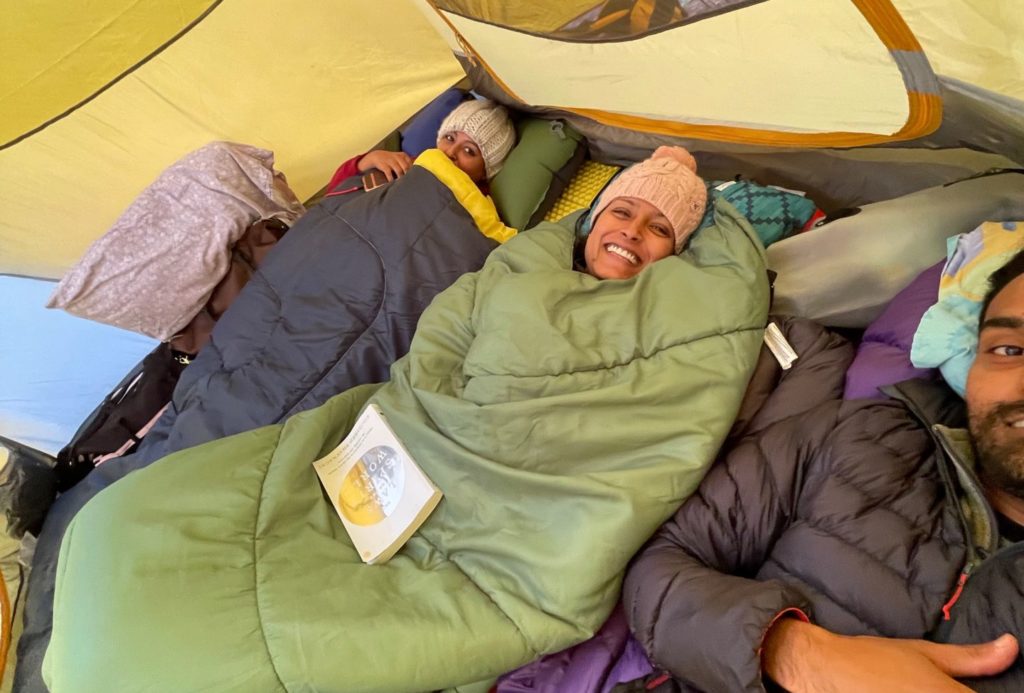
Pro-tip: If the weather forecast predicts temperatures slightly lower than the rating of your sleeping bag, consider a sleeping bag liner to ensure you keep warm.

4. Water Treatment
Some backcountry camping essentials are literally life sustaining. Case in point, access and supply to clean drinking water is critical when planning a backcountry trip. Treated water (via filtration and/or purification) will keep you hydrated and prevent sickness from water-borne diseases.
There is a difference between water filtration and purification. Water filters physically remove larger micro-organisms such as bacteria (E. coli, Giardi). If you’re travelling within Canada or the US, you’ll only need to be concerned about these biological pathogens.
On the other hand, water purifiers chemically treat water for viruses (hepatitis A, norovirus) that are too small for filters. Less-developed areas of the world require water purification.
If you are trekking in areas with mountain springs or glacial run-off, the water quality might be good enough to not require treatment. However, river or lake water will definitely require treatment prior to consumption.
A great option for most types of camping in North America is a gravity filter system. You just need to fill the reservoir with water, hang it up and let gravity and the filter do the rest!
Pro-tip:Pump-action filters are a great alternative if you need on-the-go water (while hiking, canoeing, etc.). Store clean water in bottles or a bladder and stay hydrated on the trail.

5. Food Prep & Cookware
Meal time can be a chore in the backcountry, especially when fuel for heating and water for cooking comes at a premium.
Hence, simple and functional stoves, cook-wear and prepping utensils to make breakfast, lunch and dinner a breeze is important.
Typically, I use a duel fuel stove for backcountry camping because of its compact and light-weight design. For cook-wear, a titanium fry pan and a nesting pots/plates set are all we need. And for cutting, I bring a mini cutting board that easily slips into my pack.
Pro-tip: Purchase cookware that is compatible for both stove-top and campfire cooking, that way you are covered in the event you run out of fuel.

6. Food Storage
Squirrels and small critters will undoubtedly be visiting your backcountry campsite to score scraps while you sleep. However, the last thing you want to wake up to is a hungry bear that is rummaging through your food looking for that illusive pot of honey.
To store perishables and to prevent Winnie the Pooh from making an appearance, a well-sized and secure container is a must. Containers come in a variety of sizes, are usually waterproof and built of durable material to keep the most ambitious creatures at bay.
I take my 30L bear barrel to pack all of my food and toiletries for canoe camping, then hang it far from my campsite overnight. For hike-through camping, I take canisters that are air tight, waterproof and bear proof.
For more information on food storage, check out my article on Proper Food Storage While Camping.
Pro-tip: Some backcountry sites have dedicated bear-proof food storage lockers located near campsites. However, in lieu of lockers, some parks require you to hang your food and other scented items. Check the requirements before heading out, so you bring enough rope/cordage if necessary.

7. Lighting
Whether you need it for navigating the trail after dark, prepping your campsite before bed or using camera gear for night photography, headlamps are a great tool for hands-free illumination.
When selecting a headlamp, choose one with multiple light intensities (high/medium/low) and beam sizes (focused/wide angle), that is a comfortable to wear with an adjustable strap.
We carry our Petzl headlamps with us when we camp, hike, and even during biking at night!
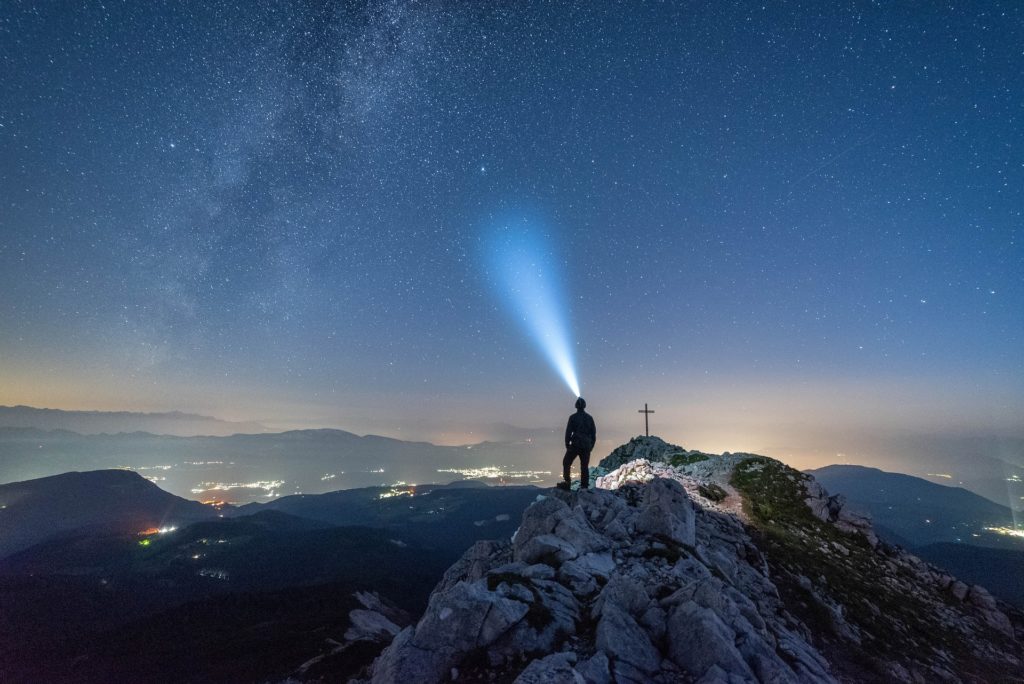
Pro-tip: When buying a head-lamp, consider ones that have a red light option. This helps maintain your night-vision and is super handy when you don’t want to disturb your sleeping partners with light pollution.

8. Power
If you intend on bringing electronics into the backcountry, a great investment is a power bank.
Keep your electronics juiced up and have emergency power in case your phone or radio battery drains.
Just remember to recharge it before heading out and you’re good to go! It’ll keep other backcountry camping essentials, like radios, GPS devices or cell phones, working properly for longer without the need to worry!
Pro-tip: Pick a power bank that has a mixture of outlet ports so you can charge multiple devices at once. This will also be handy for travelling!

9. Multi-tool, Knife & Saw
Multi-tools
Fixing or repairing camping equipment in the backcountry can be tough, especially if it’s a critical component of your gear.
That’s where a well-equipped multi-tool can get you out of a sticky situation.
A combination screw driver, pocket knife, pliers and clippers can make quick-work of loose screws and nuts, bent poles or cutting cordage.
Knife
We feel a dedicated bush knife is also a must for processing fire wood, prepping food and general bush craft.
When choosing a knife, look for one that has a durable, full tang construction with an equally durable ergonomic handle, and an easy to sharpen blade made out of corrosion resistant metal.
Need help finding the right knife? Check out How to Pick the Best Camping Knife and find the right knife for your camping activities.
Saw
Although some campers carry an axe, our preference is to bring a saw into the backcountry.
Cutting down dead-standing timbers and processing large branches (less than 5 inches thick) is far more efficient with a compact saw.
Our Picks!
My wife and I carry our small, yet functional Leatherman multi-tool in our packs on a daily basis. Not only is it great for camping, but we use ours fishing, and for small repairs around the house too.
Our Camillus “Bushcrafter” knife is great for prepping food, making kindling and crafting skewers for roasting marshmallows.
And, our Bahco saw is fantastic for prepping firewood.
Pro-tip: Always practice safe knife techniques in the woods. Survivalist Ray Mears demonstrates handy knife skills in this short YouTube clip.

10. Medical Kit
Cuts, scrapes and splinters are inevitable when camping. A well-stocked, compact medical kit is great for tending to those camp-related accidents.
There are plenty of pre-packaged medical kits available, but we recommend creating your own and stocking it with extra supplies you think you’ll need.
And, when you are finished camping, you’ll have a medical kit you can carry when traveling!
Pro-tip: When purchasing a pre-package medical kit, make sure to go through all the items to know the type and quantity of all the supplies and add more items if needed.

11. Map & Compass (Or GPS)
The last thing you want to happen in the backcountry is getting disorientated or worse, realizing you are lost.
That’s why it is imperative that you familiarize yourself with the area you are camping through by purchasing or printing and always carrying an area map.
- Highlight your route, campsite(s), entrances and exits, water sources, major landmarks and perhaps even areas with cellular reception.
Additionally, the landscape can sometimes offer little to no clues to help orientate yourself. A map paired with a compass can ensure you maintain your route even in the most obscure surroundings.
However, for some, a handheld GPS device is the best solution in the woods.
Pro-tip: The average person can walk 100 meters in under 1 minute at a leisurely pace on flat ground carrying no gear. Use this handy metric and include additional time for conservatism to gauge the time (and effort) it will take to trek on the trails.

12. Waterproof Shell Jacket & Pants
Not only can showers put a damper on your camping plans, but wet clothes coupled with cooler temperatures and wind can become a recipe for hypothermia.
So, unless you are camping in Death Valley or Sub Saharan Africa, it’s never a bad idea to carry a waterproof shell layer.
Most shell jacket and pants can easily be rolled up and tucked away in your pack. Find ones that are made of waterproof materials like Gortex, include an adjustable hood and taped seams to prevent water seeping into underlying layers.
For more information about camp clothing, check out my article What Clothes to Bring Camping.
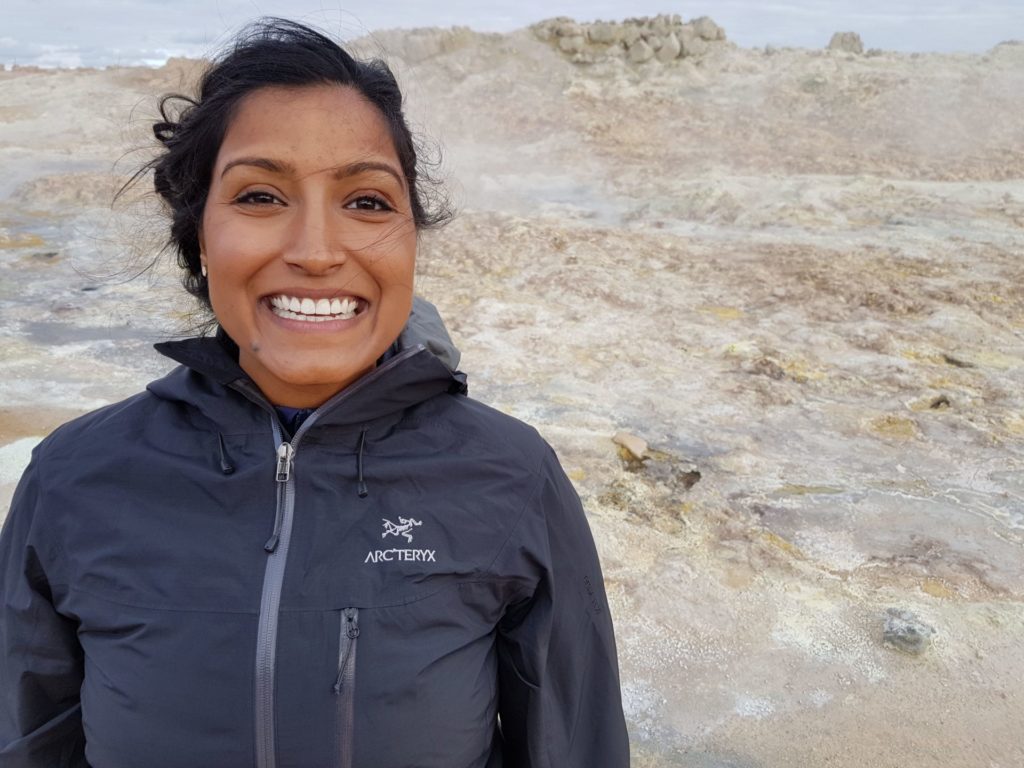
Pro-tip: Position your shell layers close to the top of your pack for easy access during unsettled weather conditions.
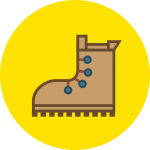
13. Hiking Boots
It goes without saying that comfortable, durable and suitable footwear is very important, especially on long camping trips with extended time on your feet. A pair of sneakers just won’t cut it, sorry!
Instead, you’ll need a solid pair of hiking boots, well suited for the terrain you’ll be tackling.
I recommend mid the following:
- High ankle support to prevent sprains.
- Waterproof yet breathable materials for those wetter days,
- Well patterned souls for extra grip on loose ground
- Plenty of cushion for all day support.
The boots my wife and I wear (Scarpa GTX and Solomon X Ultra) keep us prepared for a wide range of terrain and weather conditions.
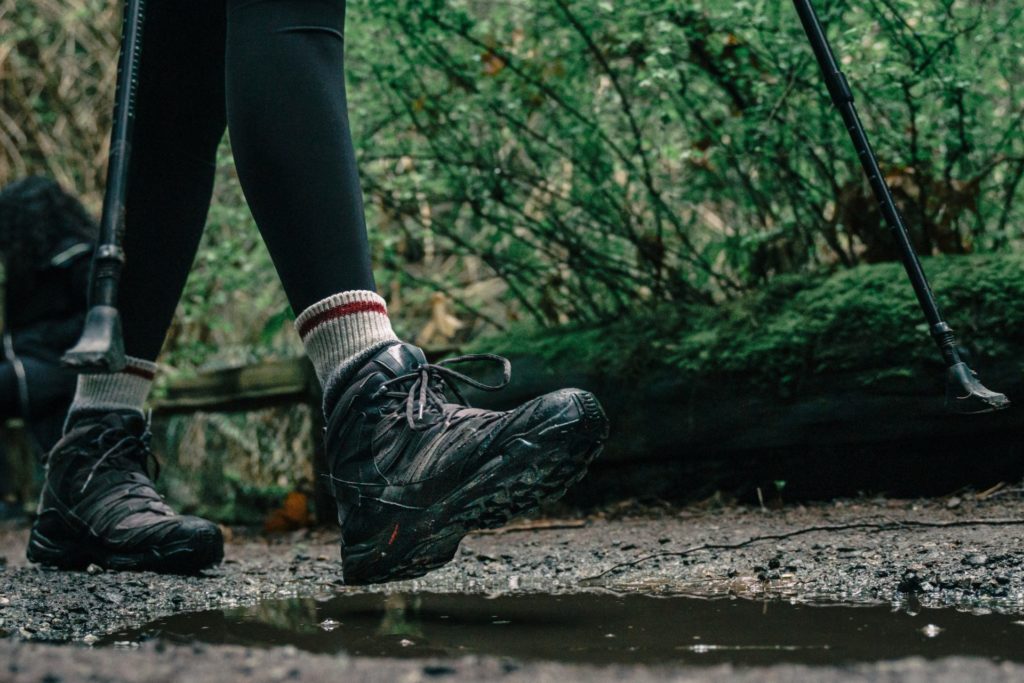
Pro-tip: Make sure to pair your boots with comfortable and appropriate socks to prevent skin-to-boot abrasion. Leave the ankle socks at home and invest in a good pair of merino wool or polyester socks designed for temperature regulation, wicking away moisture and drying quickly.
Here’s a great article from REI about backpacking socks. https://www.rei.com/learn/expert-advice/backpacking-socks.html

14. Safety & Survival
Because of the remote and unpredictable nature of the backcountry, considerations for personal safety, communication and survival should be adopted.
Bears, moose, cougars (not the over 50 human kind) and other large animals are usually well aware of humans and keep their distance.
However, in some circumstances, such as encountering cubs, rutting (mating) season, or when natural food stocks are low, the odds of a dangerous encounter increase.
Traveling in groups, carrying bells and minimizing scents will help reduce your paths from crossing.
If you do come face to face with a charging animal, bear spray is a great non-lethal way of protecting yourself. Check out my article on Camping in Bear Country for more information on self protection from bears.
For communication, cellular phones may not be 100% reliable because of limited coverage in the backcountry. For very remote trips, 2-way radios and satellite phones are great ways to stay in contact with base camp or to call for help. In an emergency situation, a personal locator beacon can be activated to alert rescue personnel.
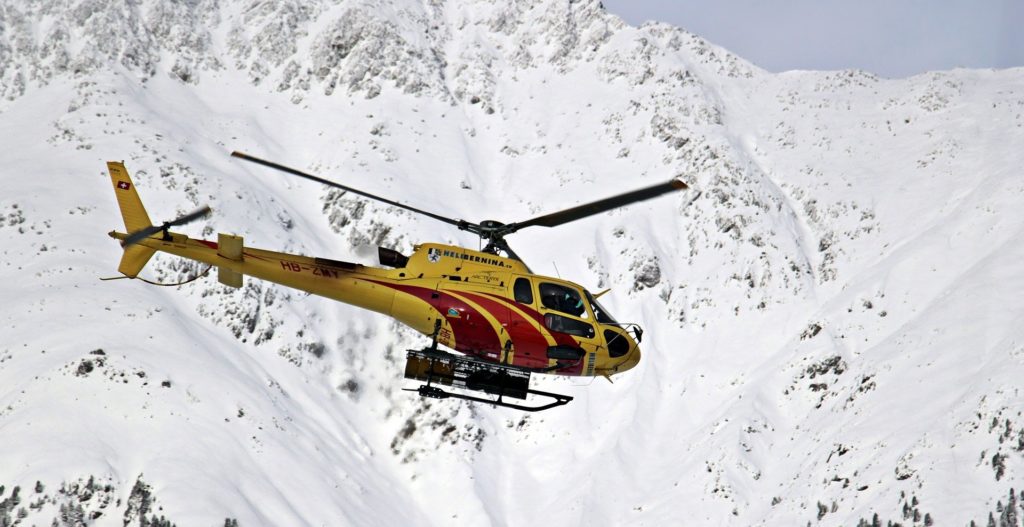
Pro-tip: Before heading out, we ensure that someone knows the exact details of our trip, including our start/finish date and route. We even schedule “check-in” times and develop an action plan if communications are lost – just to be extra safe!

15. Sun & Skin Protection
An often forgotten necessity while camping, especially during the long summer months, is sunscreen.
Experiencing and treating sunburns in the backcountry can be rough, so preventing them is paramount. Carry a sunblock with a high SPF rating, that is waterproof/sweat-proof, and apply regularly to exposed skin.
However, the easiest way to ruin a perfectly good camping experience is forgetting… insect repellent. Even the most patient camper (or dog) will eventually turn into a serial killer thanks to these pesky pests.
So, do yourself a huge favor and bring plenty of bug spray! Not only will you prevent bites, you’ll also reduce the risk of getting sick from bug-borne diseases.

Pro-tip: A wide brimmed hat is a great way to keep your head cool and prevent direct sunlight on your face. Tilley hats are fantastic as they are both functional for camping and every day life.
With the right camping essentials and proper planning, venturing into the backcountry can be an uplifting yet grounding experience.
Let nature help energize your spirit and inspire your imagination. So, get out there!
What are your favorite backcountry camping essentials, tips and tricks? Let me know your thoughts in the comments section below.
This article contains affiliate links, which help support this blog at no cost to you!
